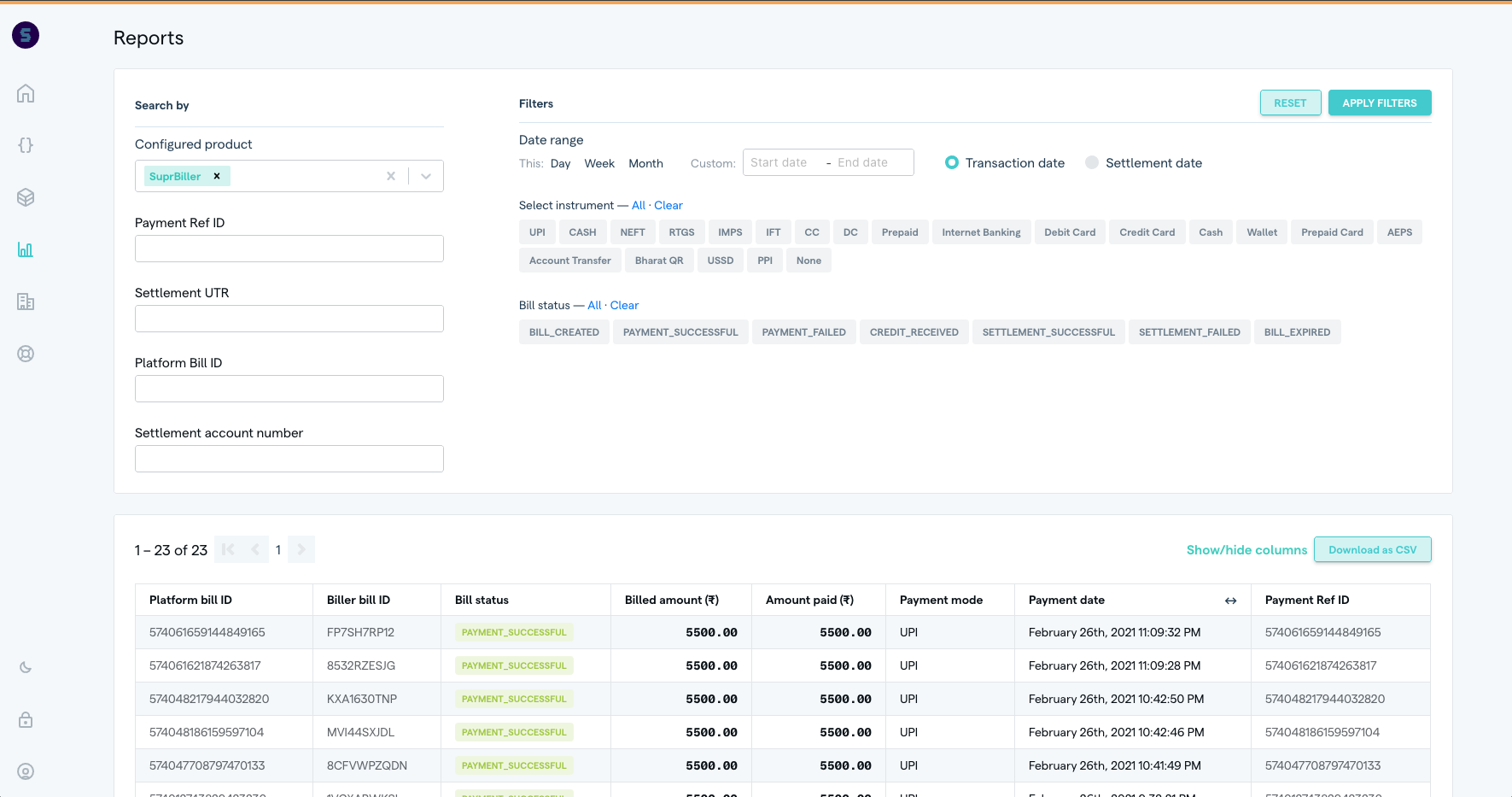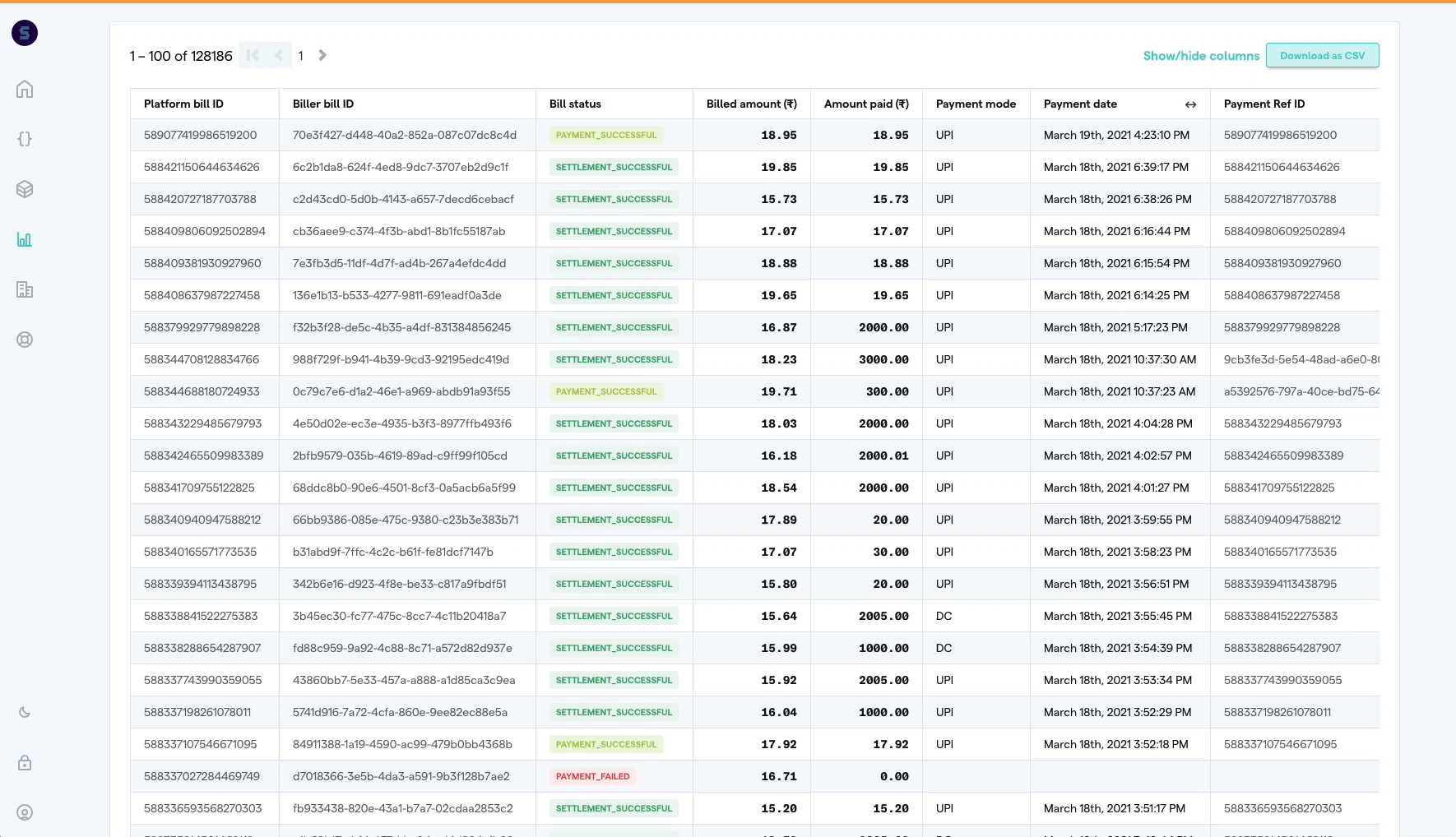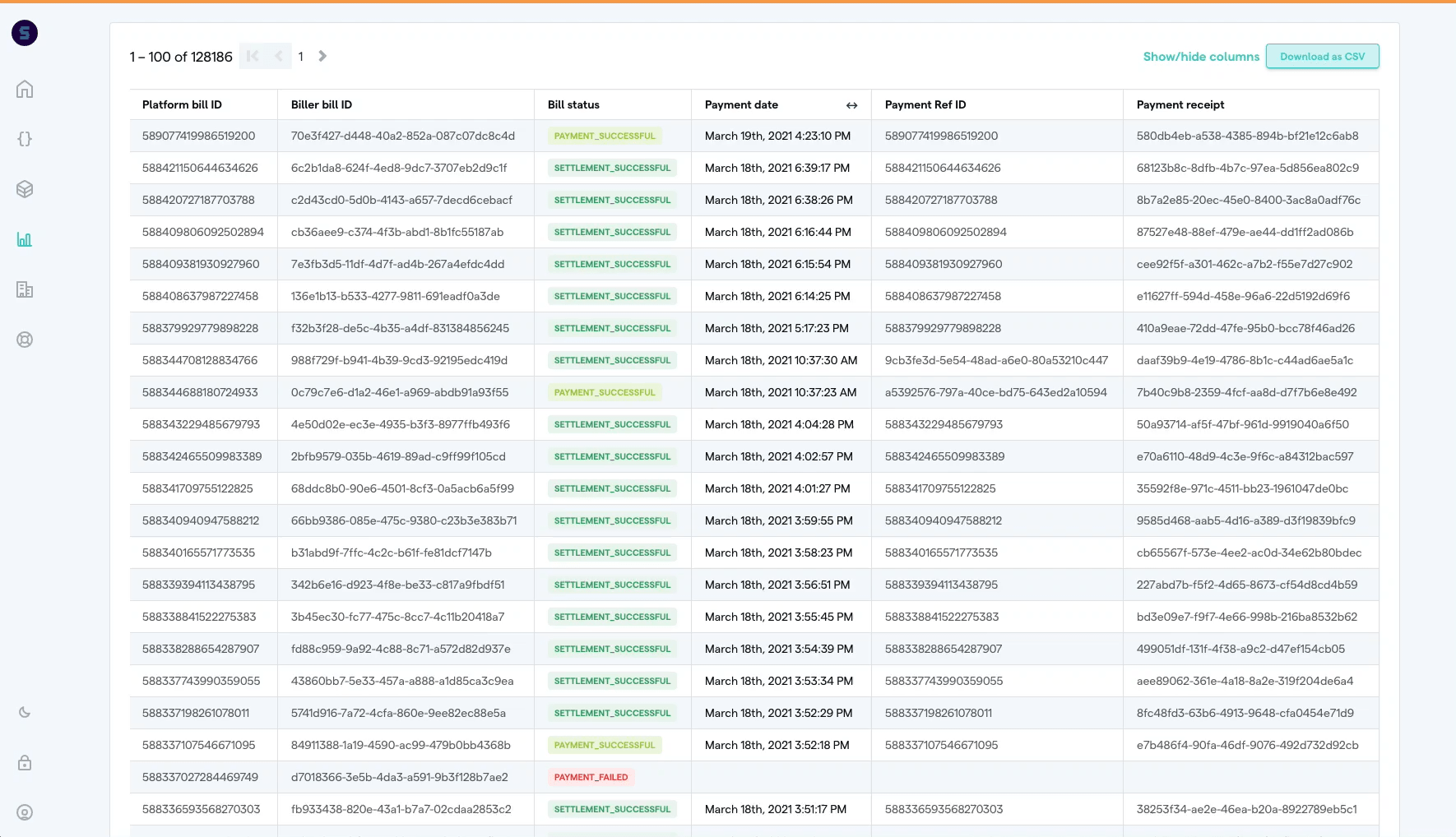#Reports
Reports lets you access the entire list of transactions that happen at the partner level. You can access reports from the left nav panel. Additionally, you can also access a specific configuration’s records by clicking on it, and navigation to the “Transaction” tab.
You can use the various filters available on the top to help narrow down and find specific sets of transactions.
Also take a look at our Reports API ↗, that lets you fetch report data automatically over APIs and automate your reconciliation process.

Keep in mind that the reports data depends on the environment you are currently in. In sandbox, you can see only sandbox transactions, and in production, you can access only the production transactions for live configurations.
Here’s how you can make the switch—

#The reports table
The records are listed below the filter section in the form of a large table. By default, this table contains some basic information.
Display details
Click on a row—and an info panel open up on the right, which displays in-depth information about that transaction. Click on the cross at the top of this panel to close it again. You can also keep the panel open persistently—simply click on another record to update the details displayed in the info panel.

Show and hide columns
You can change the default information displayed on this table to show more data. Click on the “Show / hide columns” option just above the table, and check the columns you want displayed, and uncheck the ones you do not. Close the info panel, and you should see the updated table with the new columns.

#Apply filters
The top section has a extensive set of filters to help narrow and sort through report data. Select the ones you want, and then hit the “Apply filters” at the top to retrieve the records.
Date range
This filter lets you select a start and end date for the time period you need the reports for. It comes with a “day” preset for present day, “week” for the present week, and “month” for the present month.
Besides this, you can also specify if the dates you have selected are for transactions or settlements. See settlement reports, on filtering by settlement date. Here’s a video on how to search for, view and download settlement information.
Payment instrument
This is an exhaustive list of payment instruments that Setu supports. You can specifically select the type of instruments used to make the payment. Click on an instrument type to select and add it to the filter. Added instruments to be applied are highlighted with a light border. Click on it again to remove it from your selection. Hit “Apply filters” at the top to run the search with the selected instruments.
Bill status
This filter lets to narrow down records based on status of the transaction.
BILL_CREATED : The bill has been generated, ie, fetched successfully on the payer app.
PAYMENT_SUCCESSFUL : User has made a successful payment, but the payment is not yet settled to biller / merchant.
PAYMENT_FAILED : The customer attempted a payment, but the transaction was not successful. This might be due some validation reasons or bank side issues (rare scenario).
CREDIT_RECEIVED : The money is received by Setu.
SETTLEMENT_SUCCESSFUL : The amount for that payment has been settled to the biller / merchant successfully.
SETTLEMENT_FAILED : Setu attempted to settle the amount to the biller / merchant, but was not able to. Usually, we would either resolve this in the next batch of settlements or reach out to you in case there is some additional info required.
BILL_EXPIRED : The due date for the bill has passed, and the customer has not made the payment.
Other bill details
Search by the unique platform bill ID, ie, the unique identifier on Setu's systems OR by unique payment reference ID, which the bank or the payment processor sends upon payment by the customer.
Settlement details
Search across one or more product configuration with settlement information like settlement UTR or settlement account number.
#Download reports
You can also download reports by clicking on the “Download CSV” button, just above the table. A CSV, or a comma-separated values file should begin downloading immediately. You can open this in any spreadsheet application, such as Microsoft Excel to view the records.
Note that this downloaded CSV file will include all data columns for the selected records, and not just the ones displayed on the table UI.
Was this page helpful?